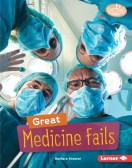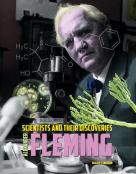
“The most exciting phrase to hear in science, the one that heralds new discoveries, is not ‘Eureka!’ but, ‘That’s funny … ‘ “ – Isaac Asimov
Serendipity science. In the high-brow world of “real” science, we often poo-poo the very idea of serendipity being even remotely involved in science done “the real way”. We like to think we are in complete control. We like to think we have all the answers or the best possible answers already tucked away in our magnificent brains.
But we don’t.
Science is not about how much we know; it’s about how much we don’t know. We often get this backward. Science and STEM, in general, are about using what we know to find out what we don’t know in order to improve our understanding.
It’s about paying attention!

ESA/XMM-Newton/N. Webb (XMM-Newton Survey Science Centre), CC BY-SA IGO 3.0, CC BY-SA 3.0 IGO via Wikimedia Commons (See note below the O.O.L.F Files for the image description.)
The scientific method we all memorized repeatedly throughout our academic experience is just a guidebook. It’s like a vacation guide. The important things, the memorable parts of a vacation, are often what happens between and around the listed vacation spots. In the scientific method, like with the vacation guidebook, the true magic lies between the listings. The observations we make along the way and the way we incorporate them into the big picture are what matters.
We not only have to do the work; we have to pay attention along the way. Something may be out there we didn’t expect. We have to be smart enough, open-minded enough, and prepared enough to recognize the unexpected and use it to our advantage. Ah, in short, this is what serendipity science truly is. It’s not pure or blind luck. It’s not magic. It’s not even Divine Intervention. It’s paying attention when things don’t go as expected or predicted.
What does this science rant from a scientist/author have to do with a STEM Tuesday Writing Tips & Resources post about serendipity?
Well, almost all the things I ranted on about STEM and science above can be applied to STEM writing. We’ve all seen this writing advice. Write what you know.
Write what you know? Maybe? Maybe not?
How about “write what you want to know”?
Serendipity can be a writer’s best friend. Use the power of serendipity to unlock the potential in our storytelling. Nonfiction, informative fiction, and fiction can all benefit from paying attention to the things that happen during the writing process.
Think about mind mapping or outlining or free writing, or the classic crappy first drafting. We use all these to not only come up with ways to effectively express our ideas but as an organizational tool. Where does serendipity fit in here? Serendipity often results in a new idea or direction we never knew existed. New ideas and directions that allow the pieces to click into place or clear a blocked path in the writing process. Serendipity might just be the “muse” creative people often allude to.
However, we can never forget two very important things. First, in order to mine the power of serendipity, work has to be done. In science or creative work, heck, in just about anything, nothing can happen if you’re not working. Fleming had to design and set up the staphylococcus experiments before discovering the unwanted mold on the agar plates killed the bacteria in close proximity. Hard work is the magic!
The second thing is maybe even more important. We have to pay attention! We have to observe and think! What if Fleming would have just tossed those Petri plates out the window in a fit of rage over poor technique in making the agar? So long antibiotics! But he didn’t throw a fit when things apparently went south, he paid attention. Bingo!
Do the work, pay attention, and unlock the power of serendipity!
Mike Hays has worked hard from a young age to be a well-rounded individual. A well-rounded, equal opportunity sports enthusiast, that is. If they keep a score, he’ll either watch it, play it, or coach it. A molecular microbiologist by day, middle-grade author, sports coach, and general good citizen by night, he blogs about sports/training-related topics at www.coachhays.com and writer stuff at www.mikehaysbooks.com. Two of his science essays, The Science of Jurassic Park and Zombie Microbiology 101, are included in the Putting the Science in Fiction collection from Writer’s Digest Books. He can be found roaming around the Twitter-sphere under the guise of @coachhays64.
The O.O.L.F Files
This month’s Out Of Left Field (O.O.L.F.) Files searches the vast expanses of the digital universe to stumble upon information that can further explain the oft-maligned and ill-defined process of serendipitous science.
- The story of serendipity from Understanding Science (Understanding Science was developed by the University of California Museum of Paleontology with support from the National Science Foundation)
- The Infinite Monkey Cage, Series 11
- The serendipity test (Nature 554, 5 (2018))
- 9 Things Invented or Discovered by Accident

- The Golden Mole Award for Accidental Brilliance
- Whoops! 12 Tales Of Accidental Brilliance In Science
- The Role of Chance in Making Scientific Discoveries
- Science and serendipity abstract
- Even serious science takes note of the value of serendipitous science! From the Royal College of Physicians Clinical Medicine journal.

(Note: Besides being absolutely beautiful to look at, the image above has such a cool backstory, I felt it proper to add the Wikimedia description below. I hope you think it’s as cool as I do even though I only understand about 10% of it. You know what this means, right? Time for a visit down the Google rabbit hole of research!
“Description: The purple lines and blotches scattered across this image show something incredible: all of the X-ray sources that were serendipitously detected – that is, not intentionally targeted – by ESA’s XMM-Newton X-ray space observatory from 2000 to 2017.
This image is based on a catalogue named 3XMM-DR8, the latest publicly released catalogue of serendipitous XMM-Newton X-ray sources, created on behalf of ESA by the XMM-Newton Survey Science Centre.
The catalogue, released in May 2018, features sources in the 0.2 to 12 keV energy range drawn from 10 242 observations made by XMM-Newton’s European Photon Imaging Camera (EPIC), an instrument capable of detecting very faint sources and rapid changes in intensity, between 3 February 2000 and 30 November 2017. It contains 532 more observations and 47 363 more detections than the preceding 3XMM-DR7 catalogue, which was made public in June 2017.
While the pattern of sources across the sky may appear random, some structure can be seen here. The oval represents the celestial sphere, an abstract perspective upon which our observations of the Universe are projected. The data are plotted in galactic coordinates, such that the centre of the plot corresponds to the centre of our Milky Way galaxy – and this can be seen in the image. Through the centre of the oval is a horizontal line, where patches of purple appear to draw together. This line is the plane of the Milky Way galaxy, with the large splotch of colour in the centre corresponding to our galaxy’s core, where XMM-Newton made a higher number of serendipitous detections.
XMM-Newton has been orbiting the Earth since 1999, observing the cosmos around us while on the hunt for X-rays coming from high-energy phenomena such as black holes, stellar winds, pulsars, and neutron stars. With every patch of sky that XMM-Newton observes, the telescope detects between 50 and 100 serendipitous sources, such as those shown here, besides the objects that were the original target of the observations. This is due to the large collecting area of the telescope’s mirrors and its wide field of view.
All-sky images and large-scale cosmic data are immensely valuable in our study of the cosmos. Upcoming missions – such as the eROSITA space telescope, a German-led satellite scheduled for launch on 12 July to complete the first all-sky survey in the medium-energy X-ray band, up to 10keV – will add to this wealth of knowledge, and help further our understanding of the X-ray Universe.”)


















